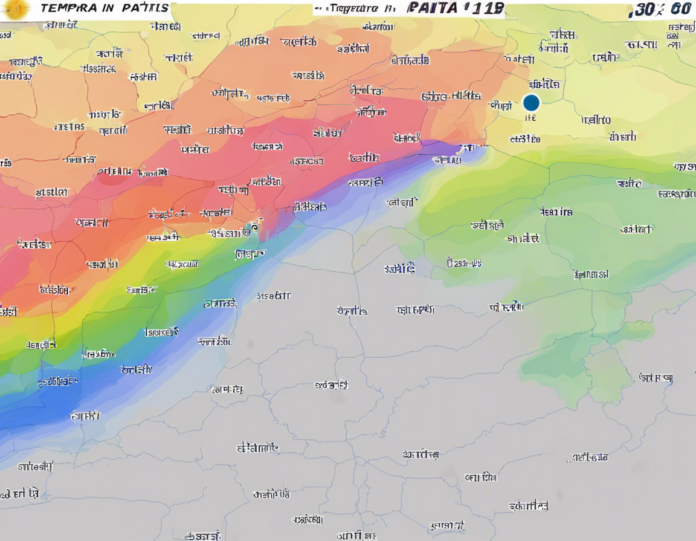Climate plays a significant role in shaping the environment of a particular region, affecting everything from the type of vegetation that grows there to the lifestyles of its residents. One such region that experiences diverse climatic conditions is Patna, the capital city of Bihar, India. Patna has a subtropical climate with extremely hot summers, mild winters, a monsoon season, and a transitional spring and autumn. In this article, we will delve into the temperature trends in Patna, exploring the highs, lows, averages, and the impact of climate change on this bustling city.
Understanding Patna’s Climate Zones
Patna falls under the Köppen climate classification system as a humid subtropical climate (Cwa). This means that the city experiences hot summers, cool winters, and a monsoon season that brings heavy rainfall. The summers in Patna are sweltering, with temperatures often exceeding 40°C (104°F), while winters are mild with temperatures rarely dropping below 10°C (50°F). The city receives the bulk of its rainfall during the monsoon season, which typically lasts from June to September.
Historical Temperature Trends
Over the years, Patna has seen fluctuations in its temperature patterns, with some noticeable trends emerging. According to historical data, there has been a gradual increase in average temperatures in Patna, particularly during the summer months. This rise in temperatures can be attributed to various factors, including urbanization, deforestation, and greenhouse gas emissions.
Summer Temperatures: A Closer Look
The summer months in Patna, typically from March to June, are characterized by scorching heat and high humidity levels. Temperatures often soar above 40°C (104°F), leading to heatwaves that can have a significant impact on the health and well-being of the residents. With the rise in temperatures due to climate change, the frequency and intensity of these heatwaves are also on the rise.
Monsoon Season: Rainfall and Temperatures
The monsoon season in Patna brings relief from the oppressive heat of the summer months but also ushers in heavy rainfall and increased humidity. The city receives the majority of its annual rainfall during this time, which is crucial for agricultural activities in the region. However, with the changing climate patterns, there has been an increase in erratic rainfall and extreme weather events during the monsoon season, leading to floods and waterlogging in certain areas of the city.
Winter Temperatures: Mild and Pleasant
Winter in Patna, from November to February, is characterized by cool and pleasant weather. Temperatures rarely drop below 10°C (50°F), making it an ideal time to explore the city and its many attractions. However, even during the winter months, there has been a noticeable increase in temperatures over the years, indicating the overall warming trend in the region.
Impact of Climate Change
Like many other cities around the world, Patna is also feeling the effects of climate change. The increasing temperatures, erratic rainfall patterns, and extreme weather events are all indicators of a changing climate. It is essential for policymakers, urban planners, and residents to take proactive measures to adapt to these changes and mitigate their impact on the city and its inhabitants.
How to Combat Climate Change in Patna
There are several steps that can be taken to combat climate change and its effects in Patna. These include reducing greenhouse gas emissions, promoting renewable energy sources, implementing sustainable urban planning, enhancing green spaces, and raising awareness about the importance of environmental conservation.
FAQs (Frequently Asked Questions)
1. Are the summers in Patna getting hotter each year?
– Yes, there has been a noticeable increase in average summer temperatures in Patna over the years, indicating a warming trend in the region.
2. How does climate change impact agriculture in Patna?
– Climate change can lead to erratic rainfall patterns, which can affect crop yields and agricultural activities in the region.
3. What are the health risks associated with extreme heatwaves in Patna?
– Extreme heatwaves can pose serious health risks, including heat-related illnesses such as heatstroke and dehydration.
4. What measures are being taken to address climate change in Patna?
– Initiatives such as promoting renewable energy, sustainable urban planning, and raising awareness about environmental conservation are being implemented to combat climate change in Patna.
5. How can residents contribute to reducing their carbon footprint in Patna?
– Residents can reduce their carbon footprint by using public transportation, conserving energy, recycling, and supporting eco-friendly initiatives in the city.
In conclusion, understanding the temperature trends in Patna is crucial for planning and mitigating the impact of climate change in the region. By taking proactive measures to combat climate change and adapt to its effects, Patna can work towards a more sustainable and resilient future for its residents.












